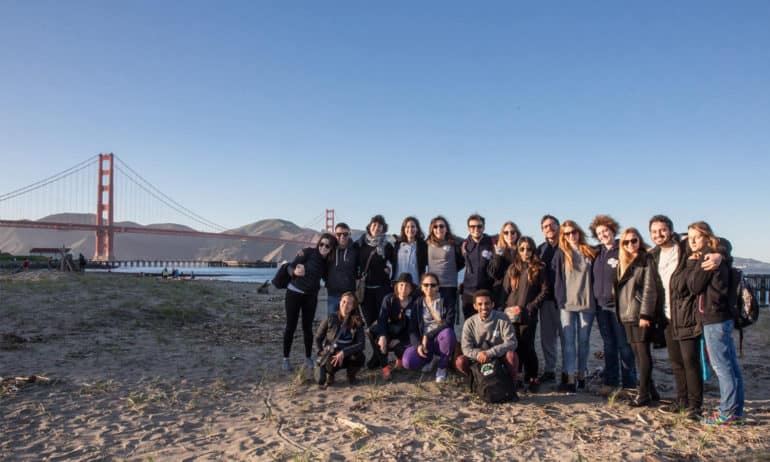From May 19 to 21, 2017, the Future Food Institute (FFI) and Maker Faire are collaborating to present Maker Faire Bay Area, an interactive event highlighting the work of fifteen food innovators. Taking place at the Future Food Area in San Francisco, this event includes the opportunity to interact with prototypes of real food projects, a panel discussion with four key innovators, and a hands-on workshop for kids.
In 2016, Maker Faire drew more than 1.4 million attendees to 191 Faires around the world, all of which focused on bringing people together to celebrate invention, creativity, and learning.
Food Tank spoke with Chiara Cecchini from the Future Food Institute about the importance of engaging a larger public in food innovation and their goals for the Maker Faire movement.
Food Tank (FT): What was the inspiration behind the first Maker Faire in Rome?
Chiara Cecchini (CC): Making is fundamental to what it means to be human. We create physical things to express ourselves, and our creations are like little pieces of us that seem to embody portions of our souls. That’s why Future Food Institute believes so much in the importance of food hands-on education: while we discover, explore, touch, prepare, share and eat food, we create an indestructible bond with it that will shape our behavior.
Maker movement is exactly about that. With the launch of MAKE Magazine in 2005, Dale Dougherty, Sherry Huss, and their team provided the catalyst for a tech-influenced DIY community that has never stopped growing. Makers meet virtually and physically throughout the year, and the 200+ Maker Faires around the globe have been making this movement more and more tangible.
The overlap seemed obvious from the very beginning. Last year, EU Maker Faire in Rome was just the right timing, partners, and place to have our first prototype.
FT: What do you think is special about the upcoming Maker Faire in the Bay Area?
CC: Both FFI and Maker movement aim at catalyzing a new generation of Food Makers: young, entrepreneurial, food-focused people who are physically building a product to fill a gap they see in our society. We are trying to do that by telling their stories on Maker Magazine (twice a week), giving them a space and a big audience to showcase (150,000 attendees in 2016) and a stage to share their stories. Furthermore, they can interact with kids, leading workshops to share their knowledge and experience with younger generations.
Maker Faire is the greatest family-friendly showcase of invention, creativity, and resourcefulness, and celebration of the Maker Movement Earth. It was born in Bay Area, that’s what makes this occasion special. In 2016, there were 191 Fairs around the globe, hitting 1,404,000 attendees: 150,000 of them were in Bay Area.
FT: What are some of the biggest challenges in the food system that these food innovators are addressing?
CC: The two main challenges they are addressing are food waste and unsustainable production.
Every year one-third of the global food production is wasted. Food waste corresponds to four times the amount needed to feed the people suffering from undernutrition worldwide.
As ReFED shows, we can reduce food waste by 20 percent through prevention, recovery and recycle. At Maker Faire we’ll have with us Regrained, Ugly Juices, and Imperfect Produces: three young companies committed to make unused ingredients and produce more appealing to final consumers.
The other big challenge is about unsustainable food production. The world’s food system is facing unprecedented challenges: the global population is set to reach 8.1 billion in 2025, with 95 percent of population growth driven by developing countries. The food system must ensure this growing population has access to the nutrition it needs to flourish, especially as climate change reshapes agricultural production. Some of the Food Makers are working on indoor farming systems, to ensure that everybody can grow their own food, as well as someone working on alternative protein sources, which are less environmentally destructive.
Moreover, we are also featuring more educational projects. Prof. Matthew Lange from UC Davis, will be there showing IC3-Foods, an infrastructure for the Semantic Web of Food, Health, and Sustainability, empowering data analysis to support the main food challenges.
FT: What do you hope attendees will learn about innovation in the food system by attending Maker Faire Bay Area?
CC: The purpose of Maker Faire is peer-to-peer learning. We aim to expose our young attendees to young makers, their solutions, and their hands-on approaches, in order to expose attendees to new concepts, as well as show them that everybody can make something impactful.
Our food system has many gaps to be filled and food challenges are impacting our daily life at to unique extent. We aim to spotlight those innovators who are actively trying to give their contribution to those challenges, to disruptively educate the Maker Faire audience, increasing attendees’ food related awareness. We strongly believe in the need for food innovation as a core part of the Maker Movement.
FT: Why do you want children to get involved in this event, in particular through the Food Tech Kids Lab?
CC: Nutrition education is an evidence-based, cost effective way to improve health outcomes and foster healthy eating habits for a lifetime. We believe that schools, together with local communities and families, need to be at the heart of food education, in order to put the tools of prevention in the hands of children themselves.
Friday@Maker Faire is a special occasion made for school groups and educators to come to Maker Faire as a field trip. For us this is the perfect occasion to enable our Food Makers to share their main learnings with groups of kids, in order to give back to the community the knowledge that they have been acquiring both in food and in technology. This leads kids to learn something new, to play with technology, and to engage with food.













